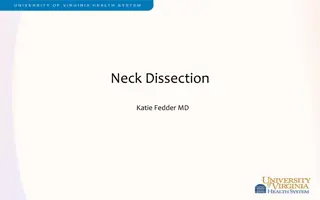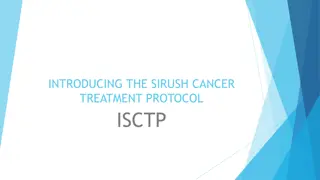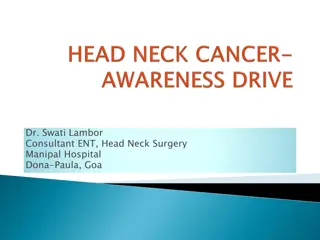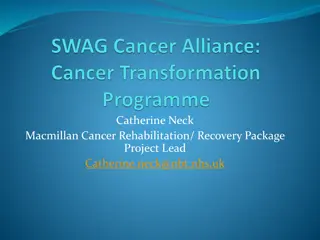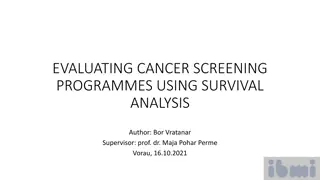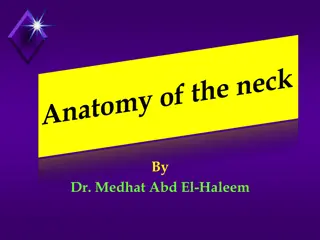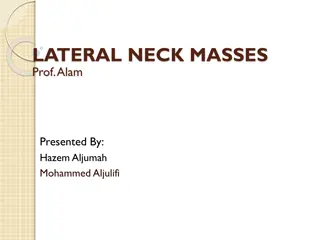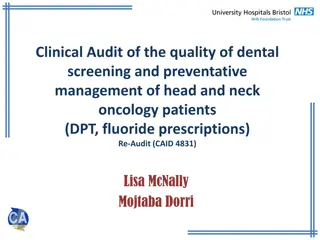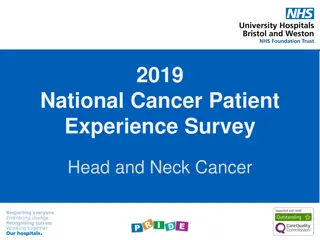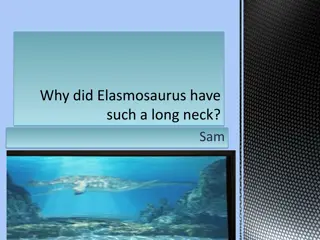Study on Factors Affecting Survival and Physical Effects of Head and Neck Cancer Treatment at 10 Years
A research study aims to examine the long-term effects of treatment for head and neck cancer, focusing on survival factors and secondary physical morbidities. The study involves following up with participants over 10 years, assessing the impact of various factors on survival and further cancer presentation. Additionally, a new study called PETNECK2 at BRI is set up to explore patient-initiated follow-up pathways post-cancer treatment, utilizing PET-CT scans and self-monitoring tools for improved patient care.
Download Presentation

Please find below an Image/Link to download the presentation.
The content on the website is provided AS IS for your information and personal use only. It may not be sold, licensed, or shared on other websites without obtaining consent from the author.If you encounter any issues during the download, it is possible that the publisher has removed the file from their server.
You are allowed to download the files provided on this website for personal or commercial use, subject to the condition that they are used lawfully. All files are the property of their respective owners.
The content on the website is provided AS IS for your information and personal use only. It may not be sold, licensed, or shared on other websites without obtaining consent from the author.
E N D
Presentation Transcript
Identifying factors affecting survival and secondary physical effects of treatment at 10 years. Head and Neck CAG January 2023
Aims To describe, at 10-year follow-up, the late effects - including the frequency and severity of secondary physical morbidities - of treatment for head and neck cancer Identification of factors at baseline, 12 months, and 3 years that may determine survival and/or further cancer presentation in human papillomavirus-positive and negative cases at 10-years
Objective 1 Using a questionnaire, we will follow up participants in the NIHR Head and Neck 5000 study at 10 years. We will assess the frequency and severity of secondary physical effects of cancer treatment 10 years after diagnosis. Hypotheses Hypothesis 1a: The prevalence of secondary physical effects of cancer treatment are high and persist to 10 years. Hypothesis 1b: Secondary physical effects of cancer treatment at 10 years are affected by genetics, treatment modality, lifestyle factors and comorbidity at the time of diagnosis.
Objective 2 We will follow-up the whole Head and Neck 5000 cohort, linking to available routinely collected data through NHS Digital, to identify further cancer diagnoses, date and cause of death and further health problems. Hypotheses Hypothesis 2a: In patients considered cancer free at completion of treatment, genetic- and bio-markers, comorbidity and continued risk factor exposures are important determinants of survival and further cancers. Hypothesis 2b: The patterns of distant metastasis in human papilloma virus (HPV) positive oropharyngeal cancer differ from those of non-HPV HNCs, occur later and at different anatomical sites.
PETneck2 We are in the process of setting up a study at the BRI called the PETNECK2 study, not sure if you have heard of it at all. It is aimed at patients who are 12 months post Head and Neck cancer treatment. It is looking toward changing the patient pathway towards patient initiated follow up. If a patient consents to take part in the study we would randomise them to either: the control arm - standard follow up pathway or the intervention arm - PET-CT scan is done which is then checked for recurrence, if clear they have an education session with the CNS and use an app to self monitor It will effectively be more appointments initially and then much fewer in the long run. Of course if at any point the patient on the intervention arm becomes concerning for recurrence they will be investigated as per normal. We are only looking to recruit 1-2 patients a month so we are not looking at a large number of patients. The study will be recruiting at the BRI from Jan 2023 Aug 2025 with the final follow ups being completed Aug 2027. We will organise 1-2 regular PETNECK2 appointment slots once a week on a Friday morning that we can put patients into as needed?
PETneck 2 As part of this we will need to book patients in to see on Friday morning clinic Obviously on the standard follow up pathway they would be seen 6 to 8 weekly. The appointments we would do are: 1.Normal follow up appointment at which we would approach them 2.Consent/Randomisation visit appointment (the following week) which would need to be a double appointment 3.PET-CT scan (we have approached the appropriate team about this already) 4.PET-CT scan results visit (2 weeks after scan) 5.CNS education session (they are aware of this and will book in themselves) 6.Patient initiated follow up appointment (needs to be within 2 weeks of patient requesting appointment for a concern they have identified during self monitoring) 7.12 month follow up 8.24 month follow up



